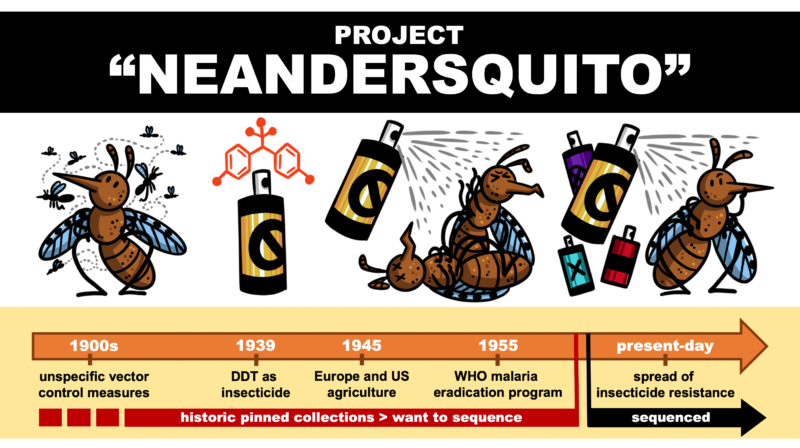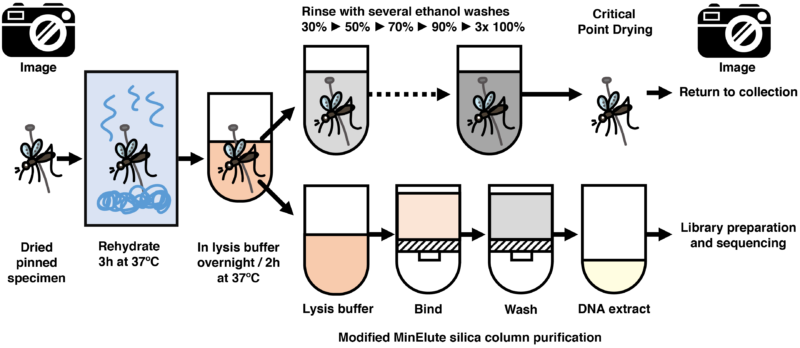
Project Neandersquito
Over the last century anthropogenic pressures on ecosystems have increased drastically with the introduction of pesticides, agricultural land homogenization, and ever increasing urbanization. This caused a rise in adaptations that circumvent said pressures, and nowhere is this more apparent than the ever increasing insecticide resistance in agricultural pests and disease transmitting vectors. This is especially worrisome for the population control of malaria transmitting Anopheles mosquitoes, as a decrease in insecticide efficiency could severely impact malaria morbidity and mortality. We can track the incidence of resistance in present-day mosquito populations, but how exactly did we get here in such an evolutionary short timescale?
This is what we aim to research with Project Neandersquito, where we comb through historic museum and archival Anopheles collections, identify interesting samples that were collected before, during and right after the introduction of insecticides, and see if we can track the changes they caused in population genomic landscapes and insecticide resistance loci we see in individuals living today on a “real time” basis.

As these collections are limited and the specimens themselves are very fragile, we have worked hand in hand with museum curators and developed methods that maximize the retrieval of fragmented and low yield DNA while keeping morphological damage to a minimum. As an added bonus, we also discovered the same minimally destructive approach works for present-day samples, and are now able to retrieve DNA for targeted or shotgun sequencing on top of preserving the mosquito specimens for potential downstream morphological assessment.

My timeline
Joined the Wellcome Sanger Institute as a Staff Scientist in Dr. Mara Lawniczak's Evolutionary Genetics team
Completed PhD under the supervision of Dr. Matthias Meyer, Max Planck Institute for Evolutionary Anthropology, Leipzig (Germany)
Joined the Wellcome Genome Campus as an EBI-Sanger PostDoc under the supervision of Dr. Mara Lawniczak and Dr. Paul Flicek
Completed MSc in Molecular Biology, University of Zagreb (Croatia)
Completed BSc in Molecular Biology, University of Zagreb (Croatia)